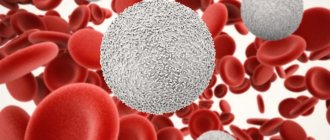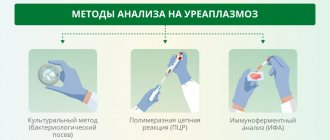Only a doctor can make the correct diagnosis based on test results and prescribe appropriate treatment. Don't self-medicate!
Laboratory testing of stool for the disgroup is important to determine the validity of assumptions about a person being infected with an intestinal infection. Otherwise it is called bacterial seeding. The analysis is indicated both when signs of dysbiosis appear and for preventive purposes. What are the rules for collecting material for a disgroup? When should it be delivered for bacteria testing? What are the nuances of deciphering the research results?
What is disgroup analysis?
Intestinal infections are the most common of all diseases today. They are scary because they affect the human body, causing intoxication. If treatment is not started in time, then everything can end very sadly. For correct treatment it is necessary to conduct a number of studies. Disgroup analysis is one of the effective methods for studying intestinal microflora using bacterial culture. The analysis can be prescribed even to healthy people if they live with infected people.
A study may be prescribed if stomach upset was noted during antibiotic treatment, and after the end of the course it stopped. They will refer you for examination if you have bloating and frequent flatulence. Women are advised to examine stool if they have persistent thrush. If diarrhea alternates with constipation, it’s time to get examined.
What does the disgroup analysis show?
The signs of intestinal infections are similar to each other, so the disease cannot be immediately determined. From the descriptions, one can understand that the main ones are loose stools mixed with mucus, pus or blood, elevated body temperature, nausea, etc. Only a correctly performed analysis will reveal the true cause. Examination of feces can help determine deficiencies in the production of food enzymes. Disgroup analysis shows the presence of microorganisms and parasites that can cause diseases such as:
- intestinal trichomoniasis;
- dysentery;
- cholera;
- salmonellosis;
- intestinal dysbiosis, etc.
What is a stool test for the intestinal group?
The test material (stool) is first inoculated on a special nutrient medium with certain conditions favorable for the growth and reproduction of m/o.
After a certain period of time, the microflora from the nutrient media is subjected to microscopic examination. At this stage, it is possible to establish the type of microorganism and its quantity. If a specialist identifies pathogenic pathogens in a certain diagnostically significant quantity, then they are immediately tested for sensitivity to antibiotics.
How to analyze a disgroup
To collect feces, you need to take a clean container and be sure to rinse it. The bottom is lined with a sheet of clean paper, on which you should empty yourself. After defecation, a small portion of feces must be collected in a specially designed disposable container. If the stool has a watery consistency, you can use a pipette to collect it. In this case, the amount of feces should not be less than 2 cm. If there is mucus and pus in the stool, they must be taken for examination, but blood, if any, on the contrary, should be skipped.
Analysis for the disgroup is taken a maximum of 2 hours before the date of delivery. Evening bowel movements are not collected for research. If the diagnosis is carried out in a child, then it is allowed to collect feces from clean linen, avoiding urine residues. At times, you may need to have rectal swabs taken by specialists in hospital. To do this, a tampon is inserted into the rectum and turned several times, after which it is removed. For loose stools, a special catheter is used, which is inserted into the anus with one end and the other into a container for collecting stool.
Feces for bacterial culture
Bacteriological examination of stool (stool tank analysis) allows you to identify possible pathogens of the disease. It is important to know that in order to submit feces for culture, several rules must be followed. Thus, the analysis is not taken when taking antibiotics, NSAIDs, laxatives and anthelmintics. It is necessary to wait 8-12 days before inoculating stool for pathogenic flora. They do not take it even after X-ray examinations of the intestines and laxative enemas. The test cannot be carried out during menstruation, and care should be taken to ensure that urine does not get into the stool.
Stool cultures for examination are taken in the morning and delivered to the laboratory as soon as possible. There, using a certain tool, the resulting material is sown on special nutrient media. These media differ from each other depending on what bacteria need to be grown. After this, the biomaterial is placed in a thermostat to grow colonies of bacteria, which will subsequently be examined to obtain a result about the presence of a certain disease.

- What does pouring cold water do?
- How to create a weekly menu for a family
- Children's birthday menu with recipes
Detailed description of the study
Culture of stool on special nutrient media for the diagnosis of major intestinal infections of bacterial origin
Some of the most common acute intestinal infections of bacterial origin are shigellosis and salmonellosis.
Shigellosis, or bacillary dysentery, is an infectious disease caused by bacteria of the genus Shigella. A feature of these microorganisms is the release of many toxins, which lead not only to intestinal inflammation, but also cause harm to the entire body (they can cause hemolytic-uremic syndrome, one of the causes of acute renal failure).
The mechanism of Shigella infection is fecal-oral. Among them, serotypes are distinguished, each of which is characterized by its own transmission route: serotype dysenteriae is spread mainly through household contact, flexneri and boydii - by water, sonnei - by food.
An important reason for the outbreak of this acute intestinal infection is the presence of undetected carriers, as well as violations of sanitary and hygienic standards and food production technology.
Salmonellosis is also classified as an acute intestinal infection. The source of the disease in this case is bacteria of the genus Salmonella. Many serotypes of these microorganisms have been identified; for humans, the most important pathogens are S. enterica, S. typhimurium, S. heidelberg, S. panama, S. infantis, S. anatum and some others.
Salmonella also produces toxins that contribute to damage to the gastrointestinal tract and the body as a whole. The mechanism of infection by these bacteria is similar to that of shigellosis. Sources of transmission of infection include eggs, meat and dairy products, and culinary products.
It is traditionally accepted to associate salmonellosis infection with damage to the small and initial parts of the large intestine, while shigellosis is associated with inflammation in the final parts of the large intestine. Currently, there are many erased forms of these diseases, in which the clinical picture does not always give an idea of the potential causative agent of infection. A person experiences diarrhea, abdominal pain, increased gas formation, chills and increased body temperature.
To choose the right treatment, the doctor must promptly and accurately identify the cause of the intestinal infection. Sowing stool on nutrient media has been an important component in the diagnosis of shigellosis and salmonellosis for many years; it allows confirming the diagnosis and choosing the right tactics to help the patient.
How long does it take to analyze a disgroup?
It is important to know that you will not be able to get the results of the study quickly, so you will have to wait to prescribe more accurate treatment. Analysis for a disgroup takes a long time, since in order to obtain true results it is necessary to grow colonies of bacteria. This requires at least a week. In some cases, test results can take up to 14 days. For this reason, you need to be prepared to wait, but the results obtained will be able to show the real picture of the disease. Sometimes it may be necessary to repeat a stool test for disgroup to identify parasites.
How to collect stool for analysis
When collecting biomaterial for laboratory testing for disgroup, you need to follow some rules, know how to collect it correctly, and within what time frame to submit the stool. Otherwise the result will be false. The container for excrement is prepared the day before. A washed, dried pot, vessel, or duck will do. For transportation, it is advisable to buy a special container, which is sold in every pharmacy. The package includes a sterile spatula (spoon). It is used for mass selection.
What to do if foreign impurities are detected in feces? It is necessary to collect the mass with mucus, pus, but without blood clots in a container. Liquid feces are collected with a pipette, filling the container from 2 to 3 centimeters. This is equivalent to one or two teaspoons by volume.
The container should be filled about a third and tightly closed with a lid. This is done so that microorganisms that accidentally enter the contents of the container do not distort the results of stool analysis for the disgroup. Before defecation, it is important to empty the bladder and wash the external genitalia. The stool retains its natural properties, necessary for disgroup analysis, for two hours after defecation. During this period of time, the container with feces must be delivered to the laboratory.
How to get tested if the patient is being treated in a hospital? It is possible to take material with a rectal smear. A nurse or doctor takes it. The process occurs as follows: a tampon is inserted into the anus, where the rectum ends, and turned 2-3 times.
The result will be distorted if you first do an enema, put a suppository in the anus, take a laxative, or take an X-ray of the intestines with contrast injection. The values of stool analysis for the disgroup will be unreliable if the patient undergoes a course of antibiotic treatment at the time of collection.
Decoding the analysis for disgroup
You can get a transcript of the disgroup analysis immediately after laboratory tests. If the presence of pathogenic microbes is detected in a patient, but there are no symptoms, then it is important to understand that he is a carrier of bacteria. The test results for healthy people should not contain the following elements:
- Trichomonas;
- shigella;
- salmonella;
- dysenteric amoebas;
- cholera vibrios;
- balantidia, etc.

In the feces of a healthy person there are about fifteen groups of microorganisms, among which are bifidobacteria, clostridia, lactobacilli, etc. Staphylococci and enterococci should not be detected in the results, but their small appearance is allowed. In the table below you can find information about the norms for the content of microorganisms in the body of a healthy person.
Indicators that increase upward may indicate the presence of dysbacteriosis. The higher the indicator, or rather its deviation from the norm, the greater the degree of damage to the body. You should not independently decipher the results of the analysis shown by culture for the disgroup. It is better to entrust this work to a professional. The doctor will carefully study the test results, compare it with concomitant diseases, and identify the occurrence of a source of infection. Only in this case the likelihood of prescribing adequate treatment will be maximum.
| View | Number |
| bacteroides | |
| enterococci | |
| peptostreptococci | |
| candida | |
| clostridia | |
| bifidobacteria | |
| lactobacilli |









